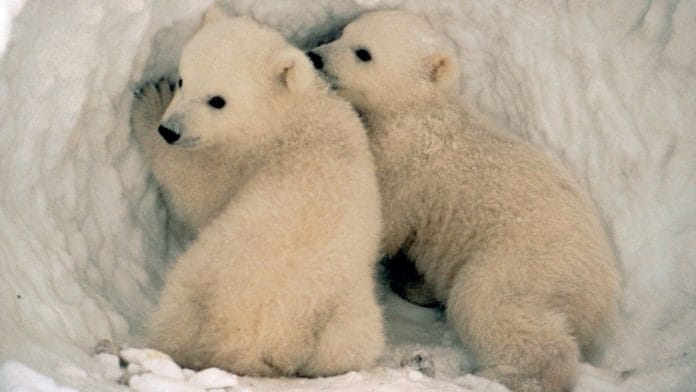New Delhi: The latest victims of Donald Trump’s tariff tizzy are penguins and polar bears. From Norway to Australia, these animals now find themselves at the centre of a trade storm.
Things took a drastic turn Wednesday when US President Donald Trump announced a broad 10 percent baseline tariff on goods entering the United States. But it was not just the major trade players that found themselves in the crosshairs. Several tiny, obscure territories—some uninhabited, others with little to no export activity—were also hit.
Among the most puzzling targets were islands like Jan Mayen, Tokelau, Christmas Island, and the remote Australian territories of Heard and McDonald Islands and Norfolk Island.
While Heard Island and McDonald Islands—now the recipients of a 10 percent tariff on goods from the US—are two of the most remote and uninhabited places on Earth, Jan Mayen, a small Arctic island, has more polar bears than people.
Ironically, the icy islands, home to nothing but penguins and glaciers and two active volcanoes, are so far from civilisation that the last known human visit was nearly a decade ago. Getting there requires a two-week boat ride from Perth, Australia.
Also Read: As Trump targets both competitors & allies with tariffs, global leaders brace for a ‘trade war’
Polar bears, glaciers, and an unexpected tariff
These islands located in the southern Indian Ocean about 2,500 miles southwest of Perth, form an external territory of Australia. A large portion of the island is covered in snow and ice. First discovered in 1833 by a British sealing vessel, it was later named after American mariner Captain John J. Heard. During the latter half of the 19th century, hunters exploited colonies of elephant seals and penguins on the island.
However, since the early 20th century, Heard Island has remained mostly undisturbed, reverting to its nearly untouched subantarctic wilderness.
In 1947, control of the island was transferred from Britain to Australia, and it is now sometimes visited by scientific research teams. Similarly, McDonald Islands, located 25 miles to the west of Heard Island, are a group of rocky, uninhabited islets. Together, Heard Island and McDonald Islands were designated a UNESCO World Heritage site in 1997.
But despite their complete lack of inhabitants (or any tradeable goods, for that matter), these islands made their way onto a White House list of places facing new tariffs.
According to World Bank export data, in 2022, the US imported a cool $1.4 million worth of goods from the islands—mainly machinery and electrical equipment, apparently. But there are no buildings, no people, and no factories.
It’s not the only one.
Part of Norway since 1930, Jan Mayen is home only to a small staff of Norwegian military personnel and meteorologists in the Arctic. The island is so remote that the only flights to it occur a dozen times a year when conditions are right. With more polar bears than people, Jan Mayen has no economy to speak of, yet it’s now facing the same tariffs as large trade hubs.
The island’s role on the list seems to be a case of mistaken inclusion—likely a result of its name or geographical association.
Next on this list is Norfolk Island, with a population of just 2,188 people. It was slapped with a massive 29 percent tariff, almost triple the rate for the rest of Australia. The island supposedly exported $655,000 worth of goods to the US in 2023, mostly leather footwear—but local authorities there say they have no clue how those exports happened, AP reported.
George Plant, Norfolk Island’s administrator, even went as far as to deny the data, saying there are no known exports to the US from the island.
Then comes Tokelau—composed of just three coral islands and home to 1,500 people. Tokelau’s economy is largely subsistence-based, relying on agriculture, fishing, and financial assistance from New Zealand, which claims it as a territory. Just like Christmas Island, an Australian territory in the Indian Ocean. With fewer than 2,000 residents, Christmas Island has no meaningful trade relationship with the US. The only interaction with America, according to local officials, is the import of heavy machinery for mining operations. Despite this, the island has found itself on the tariff list, facing the same 10 percent charge as other countries.
However, a Guardian report later revealed that the trade tariffs imposed on remote Australian territories like Norfolk Island and Heard Island, which are either uninhabited or have no trade ties with the US, appear to be based on incorrect data.
Shipments from these territories, including items like aquarium systems, boots, and wine, were misclassified in US import records.
(Edited by Radifah Kabir)
Also Read: India is evaluating implications of Trump tariffs, studying potential ‘opportunities’






